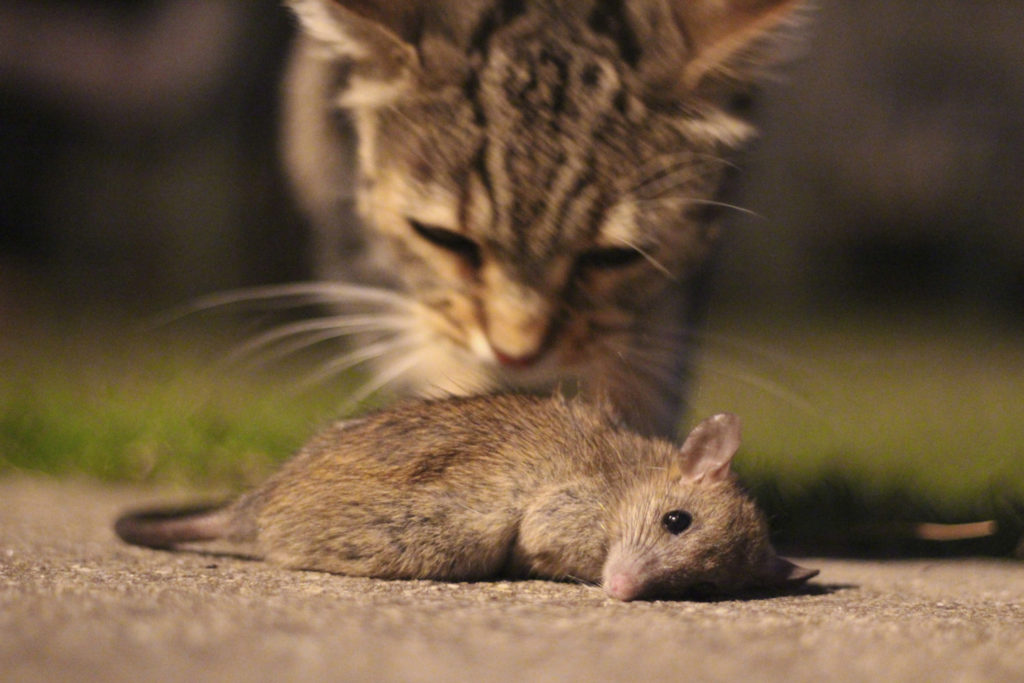
Rodent control in horse barns can help keep you and your horses safe. Rats, mice, and other rodents can do significant damage in barns, from the feed room to the tack room. They eat and contaminate horse feed, chew on tack, carry disease that can be transmitted to other animals in the barn, and gnaw insulation off wires, causing electrical problems and fire threats.
While you can take steps to prevent rodents from entering your barn—which they typically do through openings next to water pipes, vents, or under doors—it can be challenging to prevent their entry altogether.
“There is usually food readily available in barns or stables, making it difficult to attract them to rodenticide baits,” says Robert M. Timm, PhD, extension wildlife specialist emeritus at the University of California Hopland Research and Extension Center, in Hopland.
Preventing Rodents
Check your barn’s walls and flooring to make sure they don’t have cracks or separations in corners where rodents could get through for optimum rodent control in horse barns. Store feed in metal or thick plastic containers so rodents can’t chew through, and ensure the lids fit properly.
“It may be almost impossible to eliminate food sources, so another tactic is to eliminate shelter for rodents—any place they might nest, hide from predators, or hide during daytime,” says Timm.
Even if you can reduce their numbers with barn cats, traps, or rodenticides, one of the best ways to reduce or deter a rodent population is to eliminate their source of shelter, he adds. This includes keeping weeds and tall grass away from buildings so rodents don’t have protection from predators as they go in and out of the barn, making them more vulnerable.
“Often they travel at night and depend more on touch and feel (with whiskers) than eyesight and tend to travel where the ground meets the exterior of the building,” says Timm. “Mice can slip under a door or into a wall if there’s more than a quarter-inch gap. It’s hard to keep mice out because they can go through very small spaces.”
If mice or rats cannot pass through an existing space, they might enlarge it through chewing. They can even gnaw through softer metals such as aluminum and copper flashing, so exclusion requires heavier materials such as galvanized steel flashing, he notes.
Using Rodenticides in Horse Barns
Rodenticides can work to eliminate mice and rats, and many barn owners use them successfully. “However, retail rat and mouse baits have become increasingly restricted in recent years; in some states users need to have appropriate applicator training and certification to buy and apply the products,” Timm says.
A maintenance program of constantly keeping rodenticides in bait stations might be necessary if your barn has a consistently high population of rodents or is difficult to make rodent-proof. “The trick is to provide them with something they like to eat, located more conveniently than other food choices,” says Timm. “Be careful you don’t allow access to baits by nontarget wildlife, cats, dogs, horses, or livestock.”
Using Traps for Rodent Control in Horse Barns
Inexpensive wooden snap traps (mouse or rat size) are often safer than poison. Mice are less suspicious than rats and more easily attracted to traps. However, if you are persistent and place your traps strategically, you might be able to catch rats in traps as well. Use several traps, and place them where you see evidence of rodent activity and droppings. Position them so the rodent must travel directly over the trigger. Use wire to secure traps to overhead rafters, beams, or pipes if you are trying to catch roof rats or pack rats.
When placing traps along the wall, set them at a right angle, with the trigger end nearly touching the wall. Placing them at right angles to the wall along the rodent’s path is more apt to catch them than placing traps parallel, since the animal uses whiskers to follow the wall.
If using glue boards (sticky traps) or snap traps, place them in pairs. If the rodent jumps over the first one he might land on the second, or if he gets the bait from a snap trap, he might be less cautious by the time he tries the second one and can be caught.
Reusing snap traps makes them user-friendly. The rodent smell encourages these critters to use them and dispels their suspicions. You’ll also have more luck if you first put bait on them to get the rodents accustomed to eating there before you set the traps. Then they’ll be less careful and more easily caught.
Always use fresh bate for traps because stale food has less odor to entice rodents. Nearly any food will attract rodents—peanut butter, nut meats, bacon, dried fruit (raisins), or bread with butter on it. Cheese works if you tie it to the trap so the rodent can’t depart with it. Tie solid baits to the trap trigger with thread or string so the rodent can’t gently nibble it off without springing the trap.
If a rat won’t take regular bait because it’s too suspicious, try a muskrat trap covered with a handkerchief or piece of sheet. Rats are curious and usually investigate something new, and get caught. Anchor the trap securely so he can’t run off with it, if caught by a leg.
Other types of traps include flip boxes, which toss mice into an escape-proof container when they pass over a triggering mechanism or go into the hole in the side of the box. These traps work for mice if placed along their runways or next to their holes. Traps present less risk for pets or children than poisons but have the disadvantage of being labor intensive. You must check them daily and reset or rebait them, removing any dead rodents.



